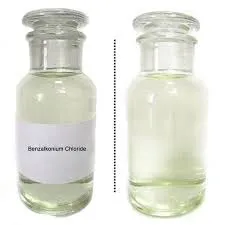isothiazolinone other names
Understanding Isothiazolinones Names, Uses, and Safety
Isothiazolinones are a class of chemical compounds widely used as biocides and preservatives across various industries. Known for their effectiveness in controlling microbial growth, these compounds are especially prevalent in cosmetics, personal care products, household cleaners, and industrial formulations. Although isothiazolinones, such as methylisothiazolinone (MIT) and chloromethylisothiazolinone (CMIT), provide significant benefits in product preservation, it is essential to understand their other names, applications, and safety considerations.
Chemical Names and Variants
Isothiazolinones have several chemical names, which can vary based on the specific compound and its application. Two of the most common isothiazolinones are
1. Methylisothiazolinone (MIT) This compound is often used in combination with other preservatives to enhance the antimicrobial efficacy of formulations. It is particularly popular in the cosmetic industry due to its ability to prevent bacterial growth in water-based products.
2. Chloromethylisothiazolinone (CMIT) Often paired with MIT, CMIT is another powerful preservative that helps in inhibiting the growth of bacteria and fungi. The combination of CMIT and MIT is frequently found in products like shampoos, conditioners, and body washes.
Beyond these primary names, isothiazolinones can be referred to by other synonyms or chemical identifiers, such as 2-methyl-2H-isothiazol-3-one and 5-chloro-2-methyl-2H-isothiazol-3-one. These alternate names can be found in various regulatory documents and safety data sheets, emphasizing the need to understand the naming conventions used in different contexts.
Applications of Isothiazolinones
Isothiazolinones serve various purposes mainly attributed to their properties as effective biocides and fungicides
. Their applications includeisothiazolinone other names

- Cosmetics and Personal Care Products Due to their anti-microbial properties, isothiazolinones are prevalent in formulations like lotions, creams, and make-up. They help extend shelf life by preventing spoilage and maintaining product safety.
- Household Cleaners Isothiazolinones are incorporated into cleaning products to prevent the growth of bacteria and mold, ensuring that these products remain effective and safe during their use.
- Industrial Use These compounds are also used in industrial settings, such as cooling towers and water treatment facilities, where microbial contamination can pose significant challenges. Their application helps in maintaining operational efficiency and safety.
Safety Concerns and Regulations
While isothiazolinones are valuable in many applications, they have raised safety concerns, particularly regarding skin sensitization and allergic reactions. Over the years, cases of allergic contact dermatitis linked to MIT and CMIT have been reported, prompting regulatory attention.
In response to these concerns, regulatory agencies, including the European Commission and the US Environmental Protection Agency (EPA), have established guidelines on the safe usage limits of isothiazolinones in consumer products. For example, the European Union has placed restrictions on MIT concentrations in cosmetics to minimize risks, highlighting the importance of consumer safety.
Conclusion
The role of isothiazolinones in various industries cannot be understated; they are critical preservatives that help ensure the safety and longevity of countless products. However, as their usage continues to be scrutinized, consumers and manufacturers alike must stay informed about the potential risks and adhere to safety guidelines. Understanding the alternative names and safety profiles of isothiazolinones is crucial, allowing for informed decisions regarding their utilization in everyday products. As research progresses, the development of safer alternatives may pave the way for a more sustainable approach to product preservation.
-
Water Treatment with Flocculant Water TreatmentNewsJun.12,2025
-
Polymaleic AnhydrideNewsJun.12,2025
-
Polyaspartic AcidNewsJun.12,2025
-
Enhance Industrial Processes with IsothiazolinonesNewsJun.12,2025
-
Enhance Industrial Processes with PBTCA SolutionsNewsJun.12,2025
-
Dodecyldimethylbenzylammonium Chloride SolutionsNewsJun.12,2025





